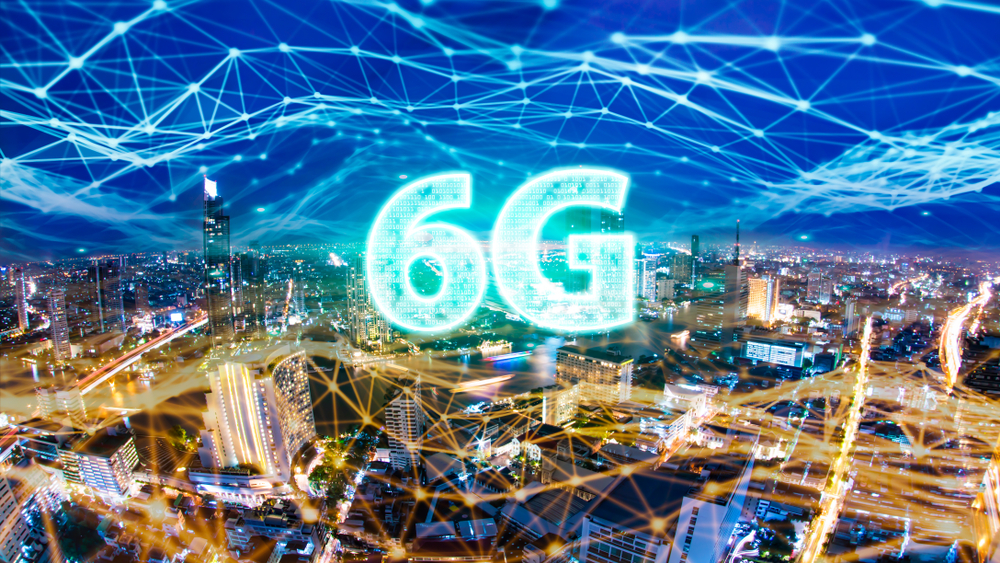We discuss the following topics in this blog:
- Need for 5G or 6G.
- Some great use cases for 6G.
In addition to these topics, we shall also be answering the following FAQs:
- What is WiFi?
- What is an Optical Fibre Cable?
Contents
What is the Need for Even Higher Network Capabilities?
The dust hasn’t settled on 4G yet, the wrapper is not off 5G, how in the world did 6G pop up on the horizon then?
Blame it on a hyperactive Sunday morning brain! But that is not the question. Question is what is the need? 4G already delivers broadband speeds. So why…even a 5G, forget 6G? We need to stretch our imaginations a bit. 5G is a paradigm shift over 4G. And 6G is going to be a quantum leap over 5G! Difficult to imagine? Read on…
The 1G to 4G evolution took about 30 years. But one thing was common to all the generations. They all delivered through the betterment of cell phone technologies and end-uses or use cases that had mostly individual consumers at the center.
5G is different. 5G shifts the focus away from both, the cell phone and the individual consumer. A lot of 5G value will be realized from IoT and enterprise use cases. 6G will take it several notches higher. So, what are some of those possibilities, the six use cases?
What are Some of the Great Use Cases for 6G?
- Smart materials – 6G will take communication, connectivity, further away from individual consumers and personal devices (like cell phones) with the help of printed electronic products, customizable UIs and sensors, augmented sensing, sensor to AI fusion, scanning health indicators, smart clothing etc.
- Intelligent personal edge – People will stay connected via personal edge (as opposed to devices) through capabilities enabled by smart materials like augmented projection interface, physical to cyber fusion etc.
- Smart city services – Imagine hyper-connected operations of living environments through AI observing and management of city logistics, sentient safety and comfort, massively scalable systems, active buildings, Ubiquitous sensing and embedded intelligence in city functions
- Super functional products – Imagine possibilities with smart materials, edge capabilities, multi-dimensional design technologies, swarm analytics, hyper secure computing!
- Bio Cybernetic identity – Humans with cyber identity or cyborgs? With paradigms like identity critical service architectures, context processing, machine learning, cyber identity, biometrics both the options are on the table!
- Autonomous mobility – Drivers not needed! With objects and infrastructure communication, swarm-based operations, collaborative mobility, multi-object IoT and hyperedge computing accidents, traffic jams etc. may not exist!
And now the REAL question is … is this really in the realm of possibility, if yes how far is this future, is 6G that shift that takes humanity to the next level?
FAQs
What is WiFi?
Put simply, WiFi is a technology that uses radio waves to create a wireless network through which devices like mobile phones, computers, printers, etc., connect to the internet. A wireless router is needed to establish a WiFi hotspot that people in its vicinity may use to access internet services. You’re sure to have encountered such a WiFi hotspot in houses, offices, restaurants, etc.
To get a little more technical, WiFi works by enabling a Wireless Local Area Network or WLAN that allows devices connected to it to exchange signals with the internet via a router. The frequencies of these signals are either 2.4 GHz or 5 GHz bandwidths. These frequencies are much higher than those transmitted to or by radios, mobile phones, and televisions since WiFi signals need to carry significantly higher amounts of data. The networking standards are variants of 802.11, of which there are several (802.11a, 802.11b, 801.11g, etc.).
What is an Optical Fibre Cable?
An optical fibre cable is a cable type that has a few to hundreds of optical fibres bundled together within a protective plastic coating. They help carry digital data in the form of light pulses across large distances at faster speeds. For this, they need to be installed or deployed either underground or aerially. Standalone fibres cannot be buried or hanged so fibres are bunched together as cables for the transmission of data. This is done to protect the fibre from stress, moisture, temperature changes and other externalities. There are three main components of a optical fibre cable, core (It carries the light and is made of pure silicon dioxide (SiO2) with dopants such as germania, phosphorous pentoxide, or alumina to raise the refractive index; Typical glass cores range from as small as 3.7um up to 200um), Cladding (Cladding surrounds the core and has a lower refractive index than the core, it is also made from the same material as the core; 1% refractive index difference is maintained between the core and cladding; Two commonly used diameters are 125µm and 140µm) and Coating (Protective layer that absorbs shocks, physical damage and moisture; The outside diameter of the coating is typically either 250µm or 500µm; Commonly used material for coatings are acrylate,Silicone, carbon, and polyimide).
An optical fibre cable is made up of the following components: Optical fibres – ranging from one to many. Buffer tubes (with different settings), for protection and cushioning of the fibre. Water protection in the tubes – wet or dry. A central strength member (CSM) is the backbone of all cables. Armoured tapes for stranding to bunch the buffer tubes and strength members together. Sheathing or final covering to provide further protection.
The five main reasons that make this technology innovation disruptive are fast communication speed, infinite bandwidth & capacity, low interference, high tensile strength and secure communication. The major usescases of optical fibre cables include intenet connectivity, computer networking, surgery & dentistry, automotive industry, telephony, lighting & decorations, mechanical inspections, cable television, military applications and space.















